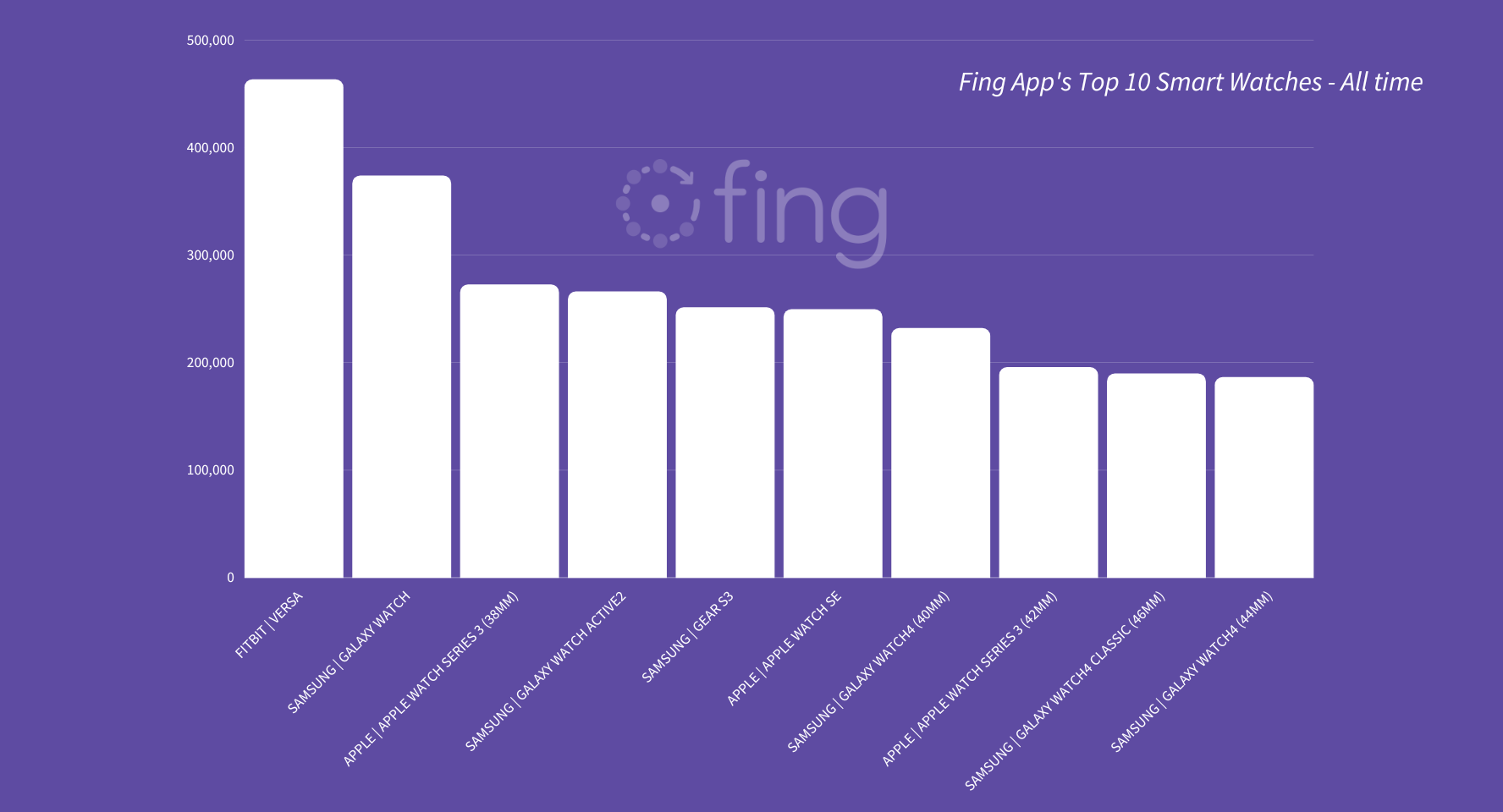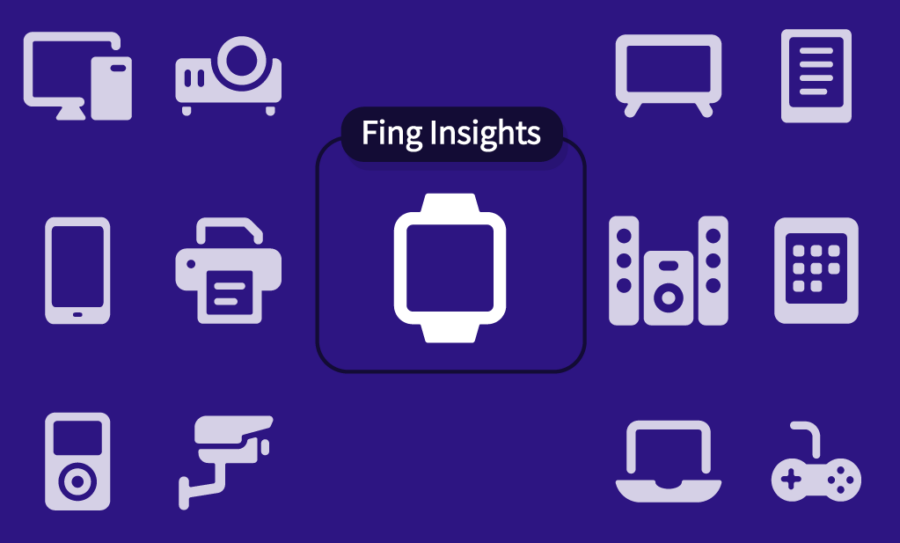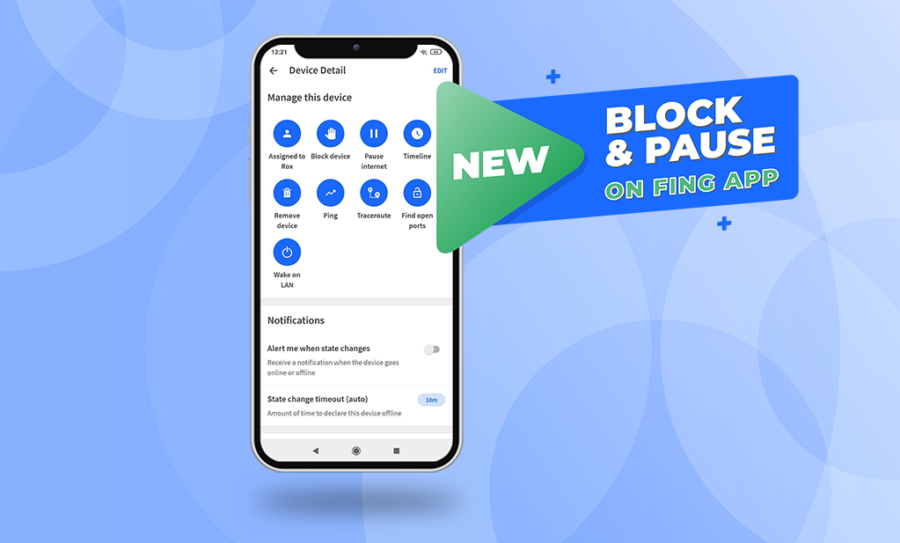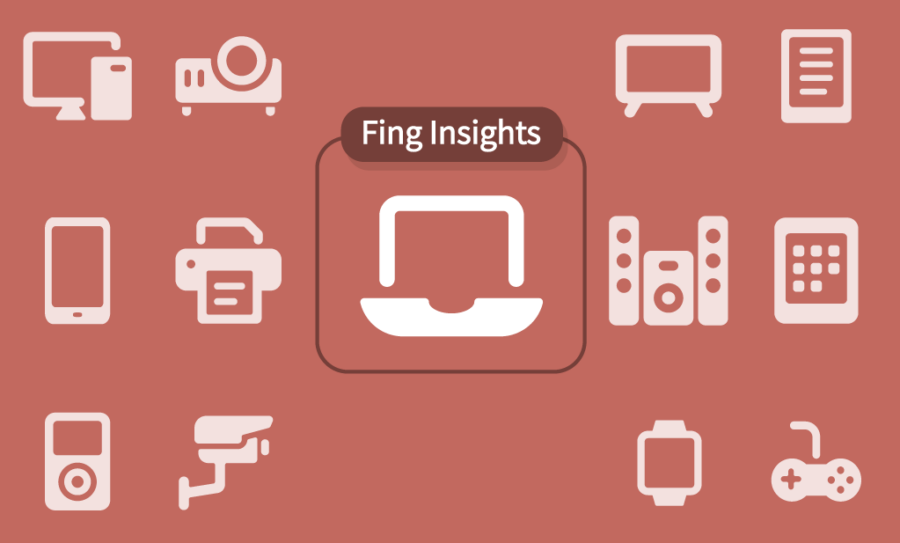Welcome back to another iteration of Fing Insights. Our previous logs have investigated device types most people consider close to home. This latest entry, however, is arguably the closest, quite literally, to date.
The global boom of the smartphone in the late 2000s opened a path to new technological possibilities. The subsequent years saw a race to find the next game changer akin to what the iPhone achieved. While some manufacturers tested the waters with ambitious attempts like Google Glass, the most anticipated type of wearable always seemed clear. Enter smartwatches.
In this new episode of Fing Insights, we’ll cover the evolution of smartwatches, from their climb up to the top to the present. Keep reading to discover more about smartwatches!
The Fing Team constantly works to expand our knowledge of devices, brands, and operating systems to provide you with the best network scanning and device recognition platform
To contribute to our ever-growing catalog, scan your network and check your devices.
The Rise of Smartwatches
While our primary focus will be on our catalog’s data, it’s important to cover the early days of smartwatches briefly. It’s debatable what year smartwatches truly entered the mainstream, but in terms of devices that inspired today’s designs, the discontinued Nike+Fuelband and Sony’s SmartWatch (both released in 2012) deserve recognition. These designs share similarities with Fitbit’s range of sports bands and Apple’s multiple generations of Watch models. The following year would see the introduction of Samsung’s original entry into the space, the Galaxy Gear. After years of teasers, speculation and anticipation, however, the 2015 release of the Apple Watch elevated a new era of innovation and competition.
Fing Trends on Smartwatches
When it comes down to overall trends, our catalog’s data shows the clear longevity of the Fitbit Versa at number one in the charts, despite the tools being out for about 5 years. The rest of the chart shows a battle between Apple and Samsung, with the latter clearly winning this one with six devices in the top 10 against three.

The top 10 drastically changes when looking at the 30-day recognitions in our catalog, specifically in the month of March 2023, with Samsung occupying nine out of ten spots. Weirdly enough, there’s no sight of Apple smartwatches, despite the brand taking three spots in the all-time chart. At the same time, Fitbit’s presence declines significantly to spot number eight, regardless of it being the most recognized of all-time among all smartwatches. Could this mean Fitbits will soon be overtaken? Only time will tell.

Keep reading to understand more about these trends and learn about the devices that made it into the charts!
Samsung Dominates the Competition
As highlighted previously, Samsung certainly had a head start on Apple in the smartwatch space. Based on our catalog data, they made the best use of that time. Among our all-time top 10, 6 watches were created by Samsung. The nearly 1.5m lifetime recognitions between all 6 were equally as impressive. The highest of these, with over 370,000 recognitions, was the original version of Samsung’s flagship wearable, the Galaxy Watch. The nearly five-year-old model also generated the highest number of recognitions within a 30-day review, with over 80,000.
The Galaxy Watch Active 2 and Gear S3 are the next highest-ranking Samsung watches on our all-time top 10 list chart at 4 and 5, respectively. The former, which came out in August 2019, has a lifetime recognition count of 266,000. Perhaps even more impressively, it still generates staggering monthly recognition figures, with nearly 50,000 detected during our 30-day review. The Gear S3, released in 2016, has generated over 250,000 recognitions and still accumulates respectable monthly figures.
Rounding off Samsung’s involvement in the top 10 all-time charts are three models of the same watch, the Galaxy Watch 4 from 2022, with different sizes of 40mm, 44mm and 46mm. They have accumulated over 600,000 recognitions since their release in August 2022. Samsung’s contribution to our review is undeniable. The fine mix of older and newer models also proves Samsung has the perfect balance between device longevity and continuous innovation. The question is then, how does the competition compare?
Curious about the Galaxy Watch 4? Check out some tips, tricks and even hidden features at the following link.
Apple Humbled but Somewhat Consistent
Samsung’s closest competitor, not just in market cap but also in our review, should surprise no one. Since entering the market, Apple has introduced many innovations, such as an on-the-go ECG sensor in their newest smartwatches. An unexpected surprise was the lack of presence of any Apple smartwatch in the 30-day top 10 from March. While the overall recognition shows that only three Apple Watch models appear in the all-time list. In isolation, this is a respectable number. However, considering its status as the de facto market leader in tech, we expected more. So, what did the numbers tell us?
Apple’s watches have generated nearly 720,000 lifetime recognitions in the top 10. Those figures are undeniably impressive. The specific models were two versions of the Apple Watch Series 3 (38mm & 40mm), released in 2017, and the first iteration of the Apple Watch SE, released in 2020. Upon closer inspection, when looking at individual performance during our 30-day review, we found that each of these models had fewer than 1,000 recognitions. While not exactly ancient, when considering how quickly technology evolves, we found it interesting that no recent Apple Watch models had broken into the top 10 in March. A different story takes shape when broadening our search parameters. The five devices immediately following our top 10 were all Apple devices with almost 670,000 cumulative lifetime recognitions.
Apple’s presence in this market segment should not be overlooked. With that in mind, it’s also apt to highlight its limitations, especially considering the general lack of newer models making it into the top 10. We’re intrigued by how this may shape up within the coming months and future releases.
Are you an Apple lover? Then you have to watch this video about 10 tips on Apple Watches!
Fitbit Nobly Battles a Duopoly
A commonly shared trend we encounter when researching our catalog’s data for Insights is the longevity of the most used devices. Smartwatches have not been an exception to that occurrence. The Fitbit Versa, the only device in our top 10 not manufactured by Apple or Samsung, was released in early 2018. It is also the highest-ranking smartwatch in our entire catalog with nearly 500,000 recognitions. The Versa also maintains a respectable monthly recognition count, with almost 3,000 in our 30-day review.
Unfortunately, as impressive a performance as this is, you’d have to look beyond the following thirty devices on the list to find another watch not belonging to Apple or Samsung (Fitbit’s Ionic, coincidentally).
While catalog recognitions do not automatically translate to these respective companies’ market cap, it’s clear that they tell an accurate story. These findings raised several questions. How does a third party foil the ‘Big Two’s’ dominance? Does said third party even intend to disrupt the smartwatch space? Is this market saturation a double-edged sword? It’ll be interesting to see how the data evolves the story over time.
Final Thoughts
We’ve covered several different topics in this latest episode of Insights. From the clever tactics Samsung applied early in the game to Apple’s tardy but assured entry into the space, Fitbit’s own competent input, and a brief history of smartwatches.
It’s fair to give an honorable mention to other devices we haven’t covered. Apple’s latest Watch models, the Series 8 and highly praised Ultra, are notable absences. These are still considered higher-end smartwatches, and the regular consumer may struggle to justify the investment. The theory has more credence when comparing catalog performance to their closest market competitor, Samsung’s Galaxy Watch 4 models.
If Fing users offer a sample size of the consumer market’s enthusiasm for smartwatches, this technology is here to stay. Our top 10 generated over 2.6m accumulated recognitions. What’s next for smartwatches, then? Time and, of course, the data will no doubt reveal all.







